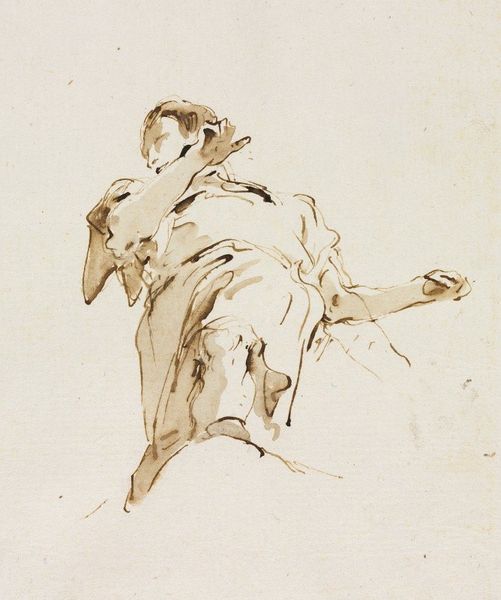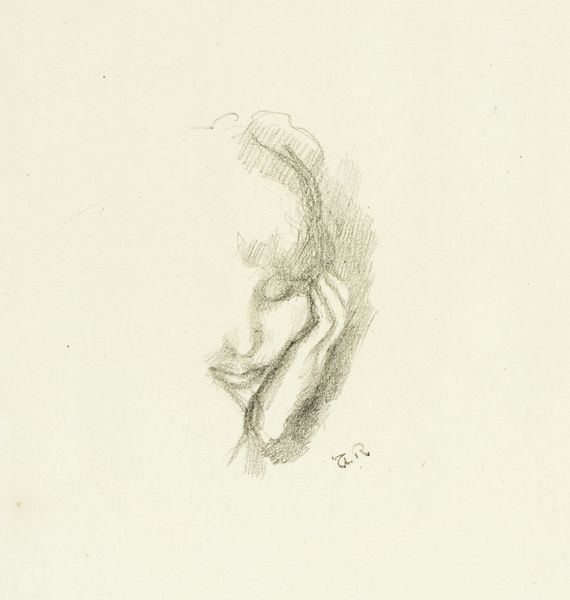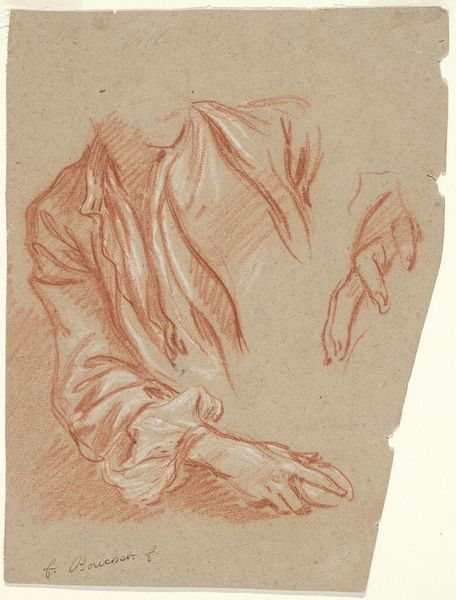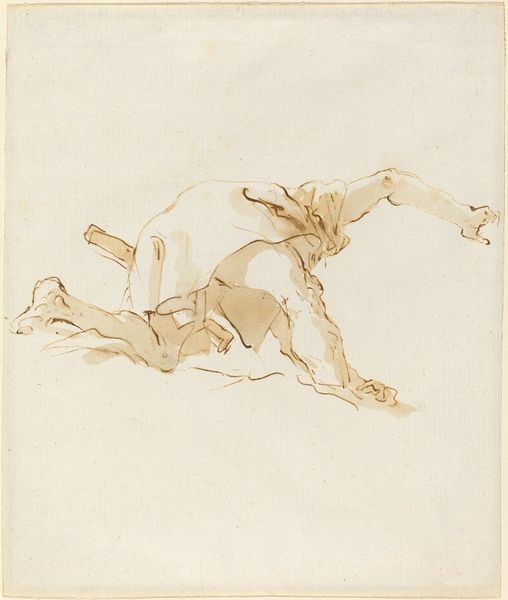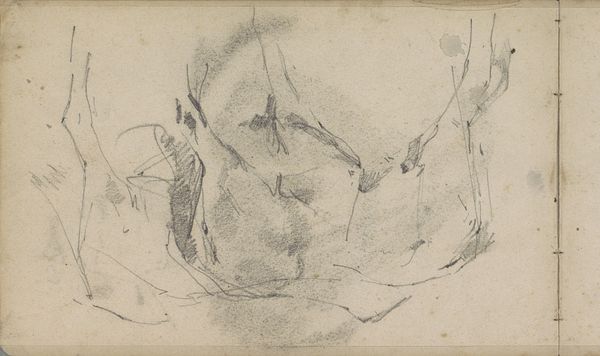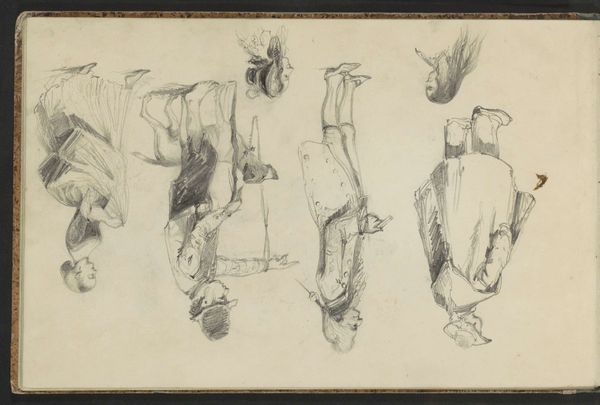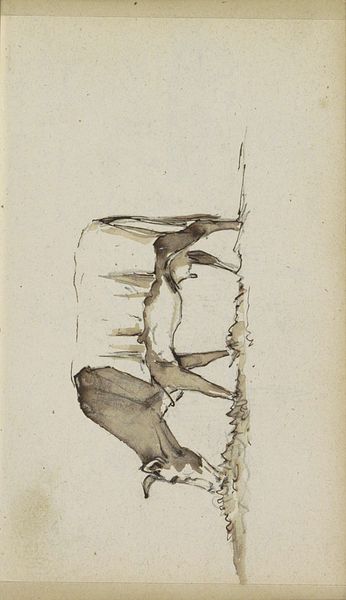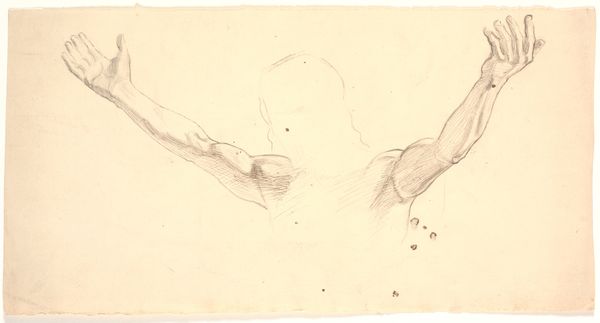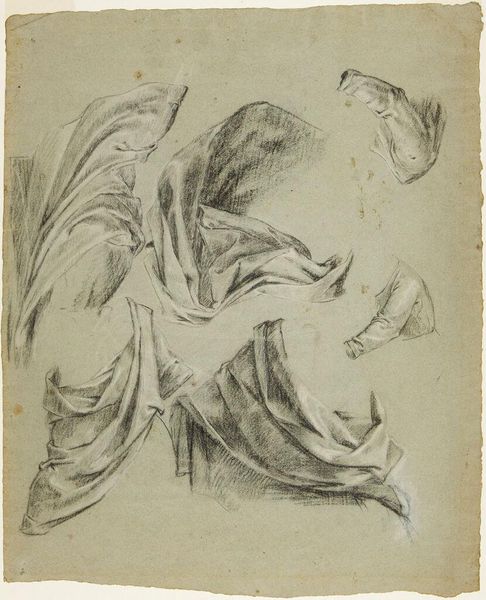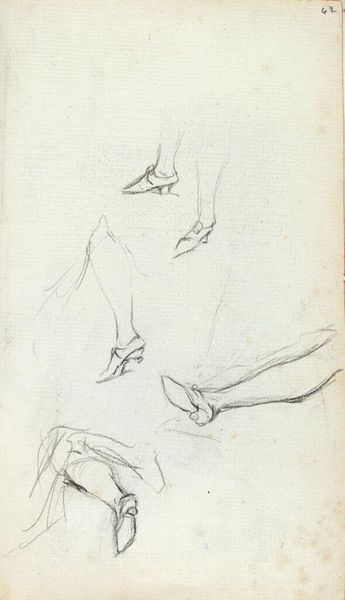
drawing, ink
#
portrait
#
drawing
#
ink
#
portrait drawing
#
rococo
Copyright: Public Domain: Artvee
Curator: This drawing is "Head of a Man in Profile to the Left" by Giovanni Battista Tiepolo, dating from around 1740 to 1745. It's an ink drawing on paper, showcasing Tiepolo's masterful hand. What are your initial thoughts? Editor: My first impression is one of delicate precision. The artist's control over the ink is evident in every thin line. The materiality of the ink and paper contrasts beautifully with the ephemeral quality of the image itself. I wonder, what kind of ink did he use to create these warm sepia tones? Curator: Absolutely. Considering the Rococo period, Tiepolo's focus was likely not merely on documenting reality, but on conveying the subject’s inner life. Given his flamboyant headdress, this figure could represent an actor, or perhaps even a caricature. Think of the social functions attached to masquerades or street theatre that were prevalent at that time, the power dynamics on view. Editor: You raise a pertinent point about the hat, indicating a possible social position linked to performance. Tiepolo had access to particular materials and a skilled understanding of the methods required to produce this image. Curator: Yes, and the medium also speaks volumes. Drawing allowed for spontaneity, directly capturing thoughts. This informs how we view the subject: a glimpse rather than a fully constructed narrative. This type of quickly produced and reproducible print has social accessibility at its very heart. What sort of statement might Tiepolo be trying to make with this sitter and mode of image making? Editor: Well, from a purely material perspective, prints facilitated widespread distribution. Did the nature of printmaking challenge traditional notions of artistic genius? The physical work that went into printmaking should also not be dismissed. Tiepolo’s economic circumstances no doubt would affect access to this print, though the very nature of reproducibility made them more egalitarian than painting. Curator: Certainly, thinking about his identity through our current frameworks is pertinent, bringing attention to both race and class divides, challenging art historical canons. This drawing, quick yet elegant, offers space for reflecting on Tiepolo’s work in a different context. Editor: Ultimately, thinking about the historical materiality of its creation underscores an appreciation of not only the finished product but the artist’s labor, ingenuity, and material awareness that went into it.
Comments
No comments
Be the first to comment and join the conversation on the ultimate creative platform.
